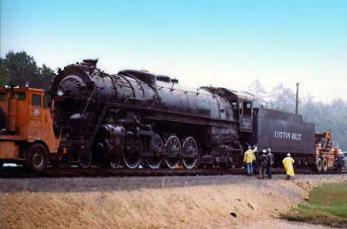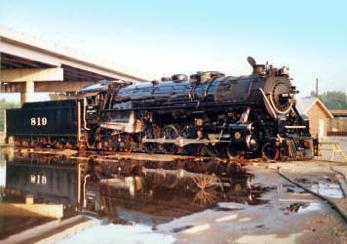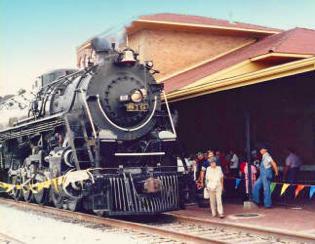
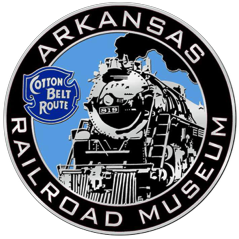
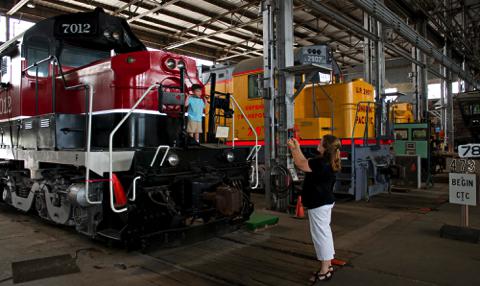
How the
Arkansas Railroad Museum
Got Started
In 1955, the Cotton Belt Railroad donated Steam Locomotive 819 to the City of Pine Bluff, Arkansas. The 819 was the last steam engine built in the Cotton Belt Shops (the same building that now houses the Arkansas Railroad Museum). A group of volunteers, mainly railroad employees, moved the locomotive to Oakland Park where it stood on display for some 25 years. With no designated caretakers, the engine was more-or-less forgotten and fell into a state of unsightly disrepair.n is free, however donations to help offset operating costs are appreciated.
In 1983, a group of businessmen approached Cotton Belt about moving the engine from the park to a track in the old machine shop, where it would be cosmetically restored and then placed in a new downtown location. The Cotton Belt agreed to move the engine and place it on a track leased to the City. However, a handful of volunteers declared, “We are going to fully restore Engine 819 to steam.” They formed the Cotton Belt Rail Historical Society and were incorporated as a 501(c)(3) non-profit. This permitted the group to solicit funds to help fund the restoration effort.
By 1986, their vision became a reality and the newly restored Engine 819 made her first trip to Fordyce, Arkansas for the annual Fordyce on the Cotton Belt Festival.
The restoration effort progressed and many people became interested in the project. This brought new visitors to the building and many began to bring items to donate to the Cotton Belt Historical Society.
As it became apparent that the project was going to grow into more than a restored steam engine, the name Arkansas Railroad Museum was adopted. Still operated by the Cotton Belt Rail Historical Society, Inc., the building encompasses over 70,000 square feet of floor space, including two display galleries and 17 tracks.
The Museum is open from 10:00AM to 2:00PM, Thursday through Saturday, though extreme temperatures can affect operating hours, since the main museum is neither heated nor air conditioned. Admission is free, however donations to help offset operating costs are appreciated.

